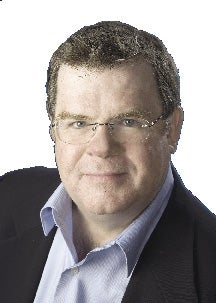We are at the beginning of one of the greatest transfers of private wealth ever. Baby Boomers (born 1945-1964) are now in their mid-50s to early 70s. The wealth transfer applies to each and every Baby Boomer who founded a business and now is considering their options for exiting that business.
The companies have been the center of the owners’ lives. They have been their primary source of income. In most cases, the company is the single greatest repository of net worth the owner possesses. And now, the owner has to find a way to turn their privately held business into retirement income.
They could hand it down/sell to a family member; sell it to a trusted manager who has the financial foundation to buy the business; sell to a strategic buyer; sell to a competitor. Or, they could restructure the business as an ESOP (employee stock ownership plan).
An ESOP is a unique vehicle for owners to fully or partially exit their business and employees to control their own retirement. An ESOP establishes an employee-owned company and offers a flexible, tax-favorable way to exit the business, provide retirement benefits and retain and motivate employees.
ESOPs are popular. In the U.S., there are approximately 11,500 ESOPs, covering about 10 million employees (about 10 percent of the workforce). For the owner, an ESOP is an attractive exit strategy for several reasons.
• The development of an ESOP creates an immediate market for the owner’s stock, and a buyer for the owner’s business.
• An ESOP locks in the value of the stock sold at the sale price, eliminating future valuation reductions due to ever-changing business and regulatory factors.
• The owner can transition the business to the employees over time if desired, thus staying actively involved in the high-level strategic decisions of the business.
• There is no need to sell to a competitor or other third party, avoiding the sharing of confidential information.
• An ESOP provides a business-continuation strategy, keeping the brand name developed over years alive and well. This legacy of the business carries on with the team of employees in place and motivated as the new owners of the company.
• A tax advantage with a leveraged ESOP is both the loan interest and principal are tax deductible. This tax advantage can greatly increase operational cash flow.
• For the family business, an ESOP can be an excellent tax beneficial succession planning tool to the next generation and key employees.
• Dividends paid on the ESOP stock passed through to employees are tax deductible, which increases cash flow availability.
For employees, an ESOP is a retirement plan they can get excited about.
• Employees are active investors. Instead of socking away retirement money in an IRA or other passive investment, the employee, each and every day, works to increase the value of their company. When that value grows, the employee’s retirement funds grow.
• Overall operational performance, profitability and cash flow improve because employees are motivated to excel in their job.
• An ESOP is a very attractive tool in recruiting and retaining high-level employees. This is a big advantage in today’s highly competitive hiring environment.
However, ESOPs are not magic solutions. There are many considerations before heading down this road. The two biggest factors impacting the success of an ESOP are factors impacting the success of any business – the business model itself and the leadership team.
The business model needs to be sound and profitable. Without these characteristics, an ESOP becomes merely an empty shell. There are no profits for funding the owner’s retirement in the short term, or the employees’ retirements in the longer term.
The leadership team needs to be mature enough to understand the employees control the company. They need to promote and empower a culture enabling employee contributions rather than operating with a top-down hierarchical structure.
The Bottom Line – If you are a Baby Boomer business owner thinking about the next phase of your life, think about an ESOP. It will definitely be worth your time and effort.
Ken Cook is the co-founder of How to Who, a program on how to build strong relationships and how to build business through those relationships. Learn more at www.howtowho.com.

